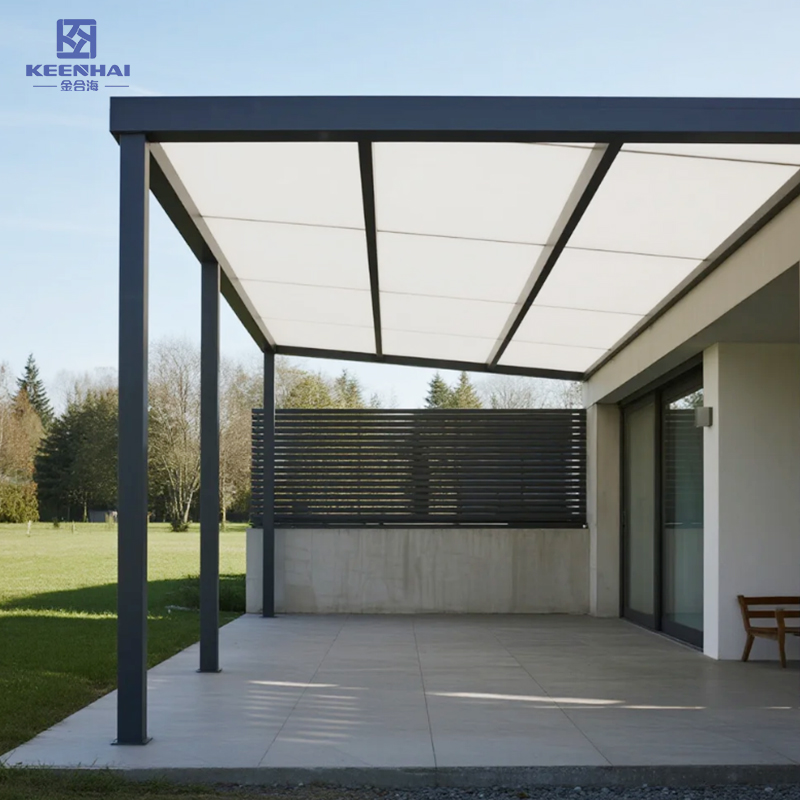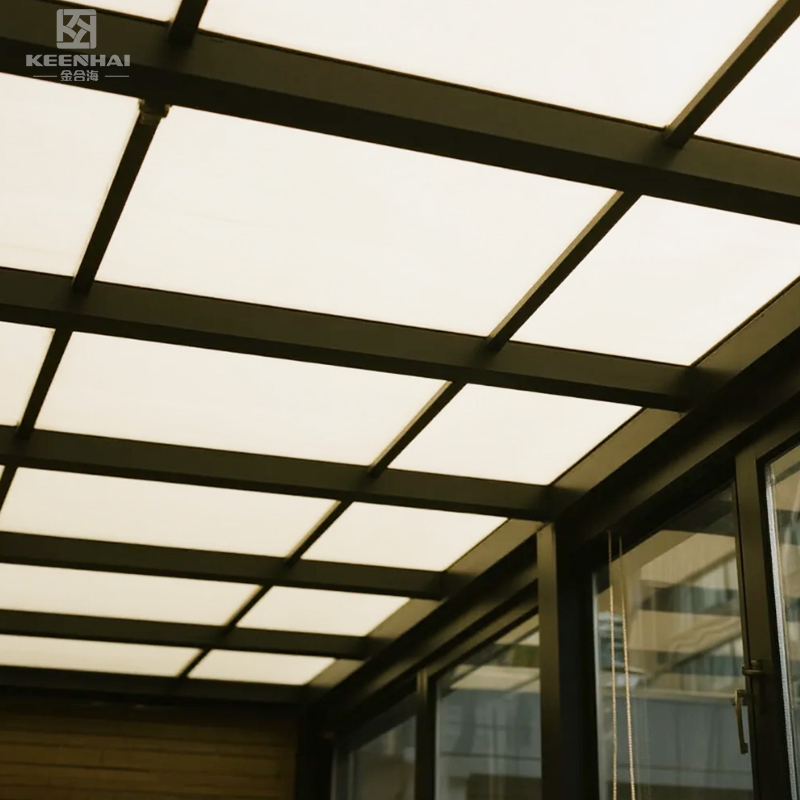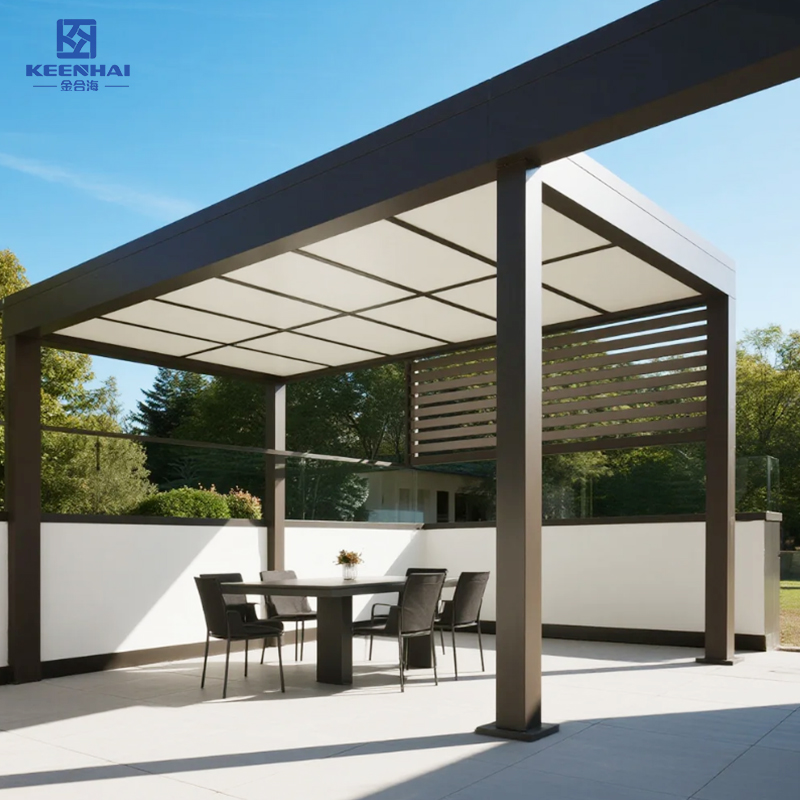
Overview of Bioclimatic Pergola Functionality
A bioclimatic pergola is not just an outdoor shade; it is an engineered system designed to control sunlight, airflow, and rain protection in real time. Unlike fixed-roof patio covers, it adapts to changing weather so you can enjoy your outdoor space more days in the year. According to a 2023 outdoor living survey, 73% of homeowners prefer adjustable outdoor structures over fixed covers because of comfort and flexibility.
Purpose and Core Concept
The main purpose of a bioclimatic pergola is to create a microclimate in your patio or garden area. By adjusting its roof louvers, you can manage the amount of light and air that enters beneath the structure. This is especially useful in climates with hot summers and occasional rain showers.
The core design focuses on three main goals:
-
Temperature regulation through shading and ventilation.
-
Rain management with smart drainage channels.
-
Energy savings by reducing reliance on indoor cooling or heating.
Key Components That Enable Operation
Every high-quality bioclimatic pergola contains specific parts that make its climate control possible.
| Component | Function | Material Options |
|---|---|---|
| Adjustable Louvers | Rotate to control sunlight and airflow | Aluminum, wood, composite |
| Support Frame | Holds the roof and provides stability | Powder-coated aluminum, steel |
| Drainage System | Channels rainwater away from the structure | Integrated aluminum gutters |
| Motor & Controls | Powers louver rotation, sometimes linked with weather sensors | Electric motor, smart system |
Premium models, like a high-quality aluminum prefab pergola, often include motorized operation with remote control and can be paired with home automation systems for hands-free adjustments.

2. Adjustable Louver System
2.1 How Louvers Rotate for Sunlight Control
A well-designed bioclimatic pergola relies on adjustable louvers to manage sunlight effectively. Each louver panel rotates along a horizontal axis, typically offering an angle range between 0° and 150°. When positioned closer to horizontal, the louvers allow maximum daylight to enter — perfect for cooler months when you want natural warmth. During hot summer days, rotating them to a nearly closed position blocks direct sunlight, reduces UV exposure, and prevents glare.
This fine-tuned control not only improves comfort but also adapts seamlessly to different times of the day and seasonal changes. According to the European Outdoor Structures Association, pergolas with adjustable louvers deliver 30%–40% more shading efficiency than fixed-roof models, helping extend the lifespan of outdoor furniture.
2.2 Mechanisms for Manual vs. Motorized Adjustment
There are two common systems for adjusting pergola louvers:
-
Manual adjustment – Operated via a hand crank or lever, this method offers straightforward control and is often chosen for smaller structures or budget-friendly projects.
-
Motorized adjustment – Powered by an electric motor, these systems allow you to adjust the louver angle with the push of a button or even through a smart home app. Motorized options often pair with weather sensors that automatically close the louvers during rain, enhancing convenience and protection.
Both systems are engineered for durability, but a high-quality Aluminum Prefab Pergola with motorized louvers generally provides smoother operation and greater long-term value.

3. Climate Regulation Features
3.1 Natural Ventilation and Airflow Control
A bioclimatic pergola creates comfort by controlling airflow as effectively as it controls light. The adjustable louvers open at precise angles to channel fresh air underneath the structure, preventing heat from building up on warm days. When the louvers open to around 45°–60°, they create a cross-breeze effect that can lower the perceived temperature under the pergola by up to 5–8°C, according to outdoor living research studies.
To achieve optimal ventilation:
-
Open the louvers partially during midday to let warm air escape while still providing shade.
-
Combine louver adjustment with side screens or curtains to direct airflow where you need it most.
-
Rotate louvers more frequently during humid days to prevent stagnant air pockets.
When paired with a high-quality Aluminum Prefab Pergola, the system offers smooth operation and precision control, so you can fine-tune your outdoor environment in seconds.
3.2 Rainwater Management and Drainage Channels
A well-engineered pergola doesn’t just block rain — it actively manages it. Once the louvers close fully, they interlock to form a watertight surface. Integrated drainage channels along the edges guide water toward discreet downspouts built into the posts. This design prevents water from dripping into seating areas and keeps the flooring dry.
In premium designs such as those from keenhaipergola, the drainage capacity can handle rainfall rates of 50–60 liters per square meter per hour, making the structure suitable for heavy downpours. To keep the system performing well:
-
Inspect and clear drainage channels every 2–3 months.
-
Check louver seals for wear to maintain water resistance.
-
Position furniture so water runoff never pools near the base of the pergola.
This combination of airflow control and efficient rain management transforms the pergola into an all-season outdoor living solution, blending comfort with durability.

4. Seasonal Adaptability
4.1 Summer Cooling and Shade Creation
A bioclimatic pergola delivers a comfortable outdoor environment even during the hottest months by combining shade and ventilation in a single design. The adjustable louvers allow you to block direct sunlight during peak hours, reducing heat exposure on the surfaces beneath. Studies on outdoor comfort show that well-angled louvers can reduce the perceived temperature by up to 8°C when paired with cross-ventilation. By opening the louvers slightly, warm air escapes while indirect light filters through, creating a naturally cooler atmosphere without relying solely on fans or air conditioning.
For maximum summer cooling, follow a clear routine:
-
Set the louver angle between 50° and 70° to maximize shade while still allowing air movement.
-
Incorporate light-colored flooring or furnishings under the pergola to reflect heat rather than absorb it.
-
Combine louver adjustments with optional side shades to block low-angle afternoon sun while maintaining airflow.
When integrated into a high-quality Aluminum Prefab Pergola, this system offers precise shade control, transforming a patio or garden into a fully usable space even during intense midday heat.
4.2 Winter Light Optimization and Heat Retention
During colder months, the same louver system adapts to capture as much warmth as possible. By rotating the louvers to an open position during sunny winter days, you let low-angle sunlight penetrate deeper into the seating area, naturally warming the space. Research on passive solar heating shows that direct winter sun can raise the surface temperature under a pergola by 3–5°C, reducing the need for external heaters.
To make the most of winter sunlight and retain heat:
-
Open the louvers fully during daylight hours to allow direct solar gain.
-
Close them in the evening to trap residual warmth and block cooling winds.
-
Pair the pergola with windbreak panels or glass screens for additional thermal protection.
Well-designed models, such as those from keenhaipergola, feature materials with strong thermal efficiency and weather resistance, ensuring year-round comfort. This adaptability means your outdoor space remains functional, inviting, and energy-efficient whether it’s the height of summer or the chill of winter.
